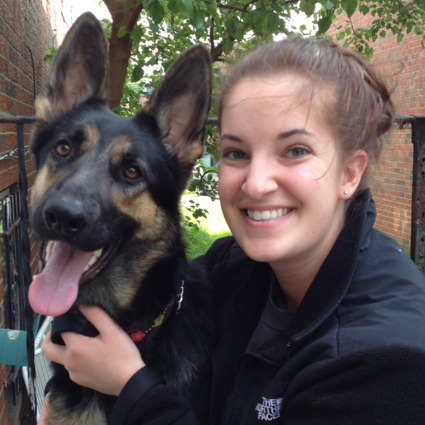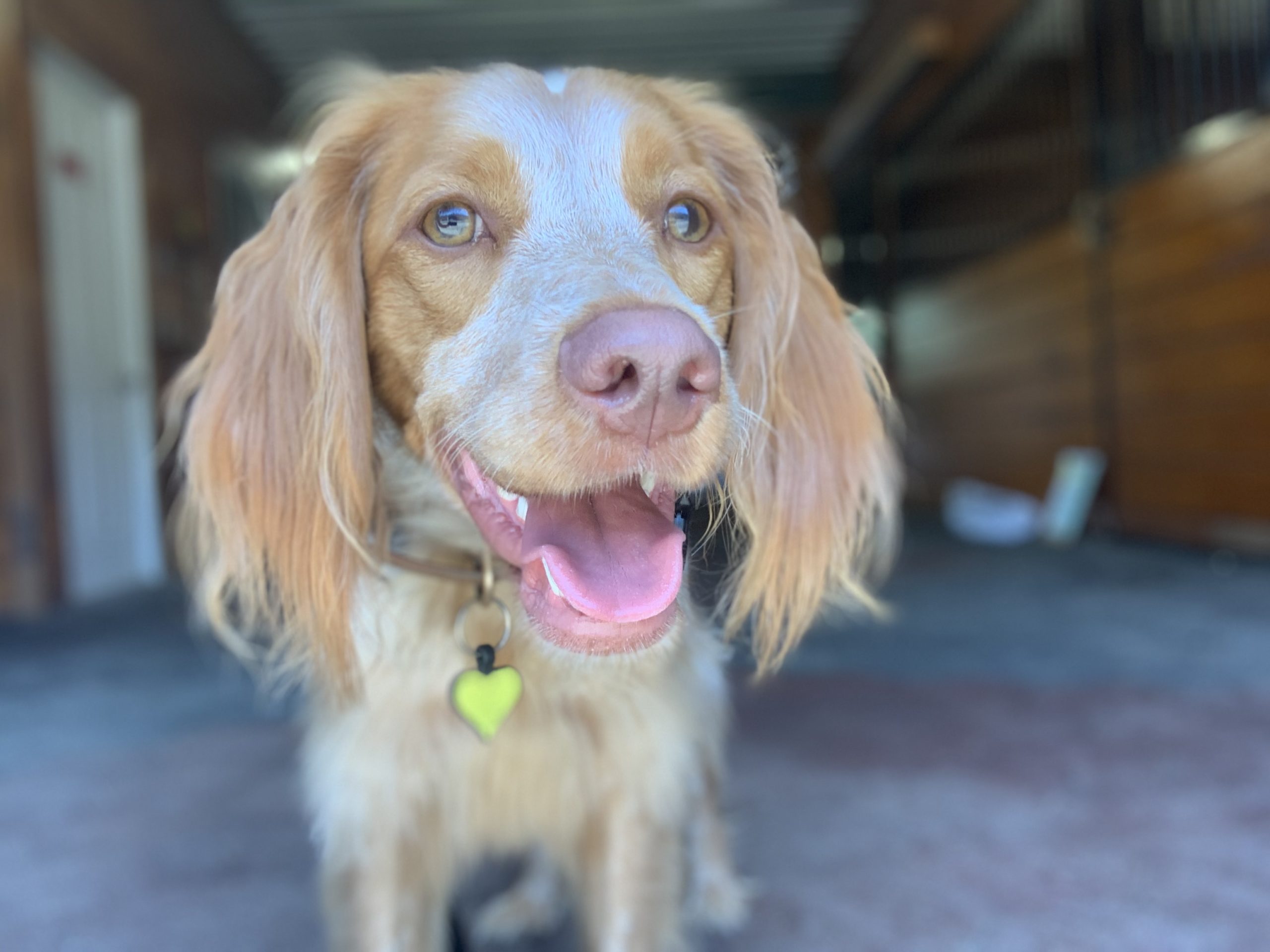by Collin Vito
As we look back 2017 and ahead to 2018, we can’t forget our furry friends. Whether it was a year full of “what’s in your mouth?!” or a year full of peaceful puppy cuddles, this is always a good time to reflect on the year’s behavior and set goals for the new year.
For me, 2017 presented the perfect opportunity to set behavior goals for my new rescue, Storm. Weighing in at 115lb and arriving with very little known-history from Philly ACCT, there were many behaviors contending for that top spot on the list. For her safety (and the safety of the neighborhood cats), one of the main behavior goals of 2017 for Storm was door dashing. After months of practice, a move, more months of practice, and many treats later, I am happy to say that the felines of Olde Richmond are safe from Storm “storming” out the door.
What made this resolution successful wasn’t my experience as a dog trainer or Storm deciding doors just weren’t her thing anymore, it was setting a positive training goal: selecting a behavior, picking an end goal, crafting a plan, and sticking to that plan!
Want to make a New Years Resolution for your furry friend? Follow the tips below!
1. Choose a behavior.
The first step of any training is going to be identifying what we want our dog to do. More often than not, we are able to identify a nuisance or undesired behavior that our dog does that we want them to stop. The hard part is identifying a behavior we want them to do instead, but this is much more important. It is much easier to train a desired behavior than it is to train to stop an undesired behavior. Many of the nuisance behaviors we notice with our dog is because they do not have the proper outlet for their excitement. One such behavior is jumping on new people who walk into our house. We know our dog is excited to meet a new person but this is not the politest way to greet someone, but what should they do instead?
2. Pick an end result.
There are usually many different choices when it comes to training a positive behavior in place of an undesired behavior. A great outlet for excitement is to train our dog to complete a task. In our example of training how to politely greet people entering our house, there are three common techniques. Our first choice of behavior is to train our dog to sit whenever they meet someone. This might seem like a simple task, but for dogs who are extra excitable it can be very hard! Another choice could be to have our dog “go to place” on cue whenever someone enters our home and waits for the person to come greet them. Or maybe you would like your dog to touch their nose to the new person’s hand as a greeting with the cue “say hello”. It is much easier to train a specific behavior to a situation than to have multiple answers that can confuse our dog when to use them. It is totally up to you what end result you choose for a behavior so pick what will make you most happy!
3. Plan it out!
Next it’s time to create a plan for how our dog will reach our desired end result. Almost all cues can be broken down into a step by step process and we have to first identify all the behaviors that make up our goal before we begin training. For example,lLet’s take our “go to place” cue. The behaviors that make it up are identifying the “place”, going to the “place”, laying down on the “place”, and staying until someone comes to greet us. That’s a lot of steps that may be unfamiliar to our dogs individually, let alone chained together! So we will have to build up each individual behavior before we can reach our goal.
4. Execute!
Identifying behavior and making a plan can be the easy part—the hard part is sticking to the plan! In order to help our furry friends put last year’s bad behavior behind them, we need to be consistent in our practice and enforcement of the plan.
For me and Storm, this year’s resolution is loose leash walking. What’s your canine New Years Resolution?


